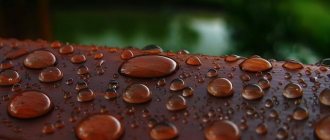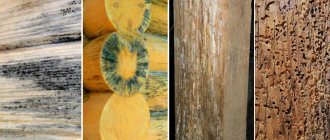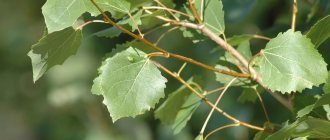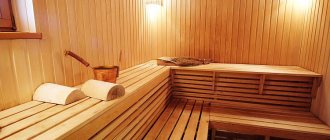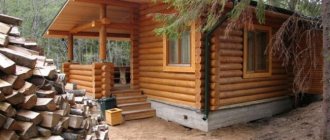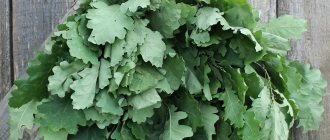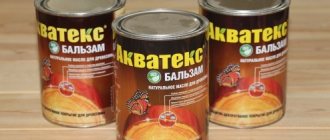Flax has been cultivated by humans for thousands of years; it has been established that this plant was grown in Ancient Egypt. Ancient manuscripts note the unique properties of flax: flaxseed and natural vegetable oil from the seeds of the plant do not contain components harmful to humans and have a depressing effect on microflora. In Russia, the plant has been cultivated since the 10th century.
Impregnation of wood with linseed oil has become a traditional way in many countries to increase the durability of wood products; the equipment of sea ships, household utensils and wooden parts of weapons were treated in this way. Wood treated with pure linseed oil is well preserved; this secret was used by Russian icon painters to process icon boards. Flaxseed oil was expensive and began to be used for processing construction wood only in the 18th century.
The world production of linseed oil is about 2.5 million tons, the leading producers are China and India, Russia accounts for 3% of world production. The largest amount of flax is grown in Canada; this country accounts for 30% of the world's seed harvest. In Canada, about 0.8 million hectares are sown annually, and 2.5 tons of seeds are obtained per hectare. Modern farming technologies have significantly reduced the cost of linseed oil, and this product has become available for mass use as a preservative for construction wood.
Linseed oil for wood impregnation
To produce technical linseed oil, curly flax is grown; the seeds of this plant contain up to 50% of oil substances. Flaxseed oil is a natural waterproof polymer; the polymerization process is activated by atmospheric oxygen; the product is stored in a closed metal container.
The requirements for linseed oil are standardized according to GOST 5791-81, the grade depends on the degree of purification. The purified (refined) product has a transparent golden-orange color, the impurity content does not exceed 0.05%, the unrefined product is darker in color, the presence of sediment up to 0.15% of the volume is allowed. It comes to the retail chain in metal and plastic containers with a capacity of 3 to 50 liters, the shelf life in plastic is limited, you need to pay attention to the packaging date.
Experts recommend using cheaper, unrefined linseed oil for impregnation of the log house, which has a shorter polymerization time; pine turpentine is used as a diluent. Professional impregnating compositions are made from the refined product.
Waxing composition
Treatment of wooden surfaces is carried out both at home and in industrial settings. The waxing composition is several components that are in different proportions among themselves, forming mixtures of liquid, soft and hard consistency.
Compositions are produced that differ in shades, density, viscosity, and consistency. They are based on one or several esters of higher acids and alcohols. They are beeswax. As a constituent element, various types of carnauba wax are often found. The basic composition includes vegetable oils: flaxseed and olive; ethereal extracts of pine needles; wood resins; drying oil Drying oil is not added if vegetable oil is used in the quick drying recipe. According to the technology, drying oil is formed spontaneously.
Pros and cons of oil impregnation
Linseed oil for impregnating wood is a multifunctional product that reliably protects against moisture and rotting. The main properties of the oil include:
- The natural polymer reliably fills microcracks and cavities between wood fibers, prevents the accumulation of moisture and the penetration of fungal spores,
- Fluidity and the ability to be deeply absorbed into wood increases the plasticity of the top layer, prevents the formation of cracks,
- It has high moisture-repellent properties, forms a thin waterproof layer on the surface,
- Is a natural antiseptic,
- The molecular structure ensures high adhesion, does not erode or wash out, provides long-term protection for wood,
- After polymerization, the degree of flammability decreases; the hardened oil impregnation does not support combustion,
- Emphasizes the natural wood structure.
This impregnation is environmentally friendly and can be used for interior work. Apply to the surface with a brush or roller, consumption per square meter is no more than 60 grams. When applying impregnation with a brush, drying time is 48-72 hours. Small parts can be treated with oil by soaking them. To enhance bioprotection, antiseptics are added to the composition; such additives can be turpentine or tar.
The disadvantages include:
- Flaxseed oil is characterized by fluidity and high surface absorption; to obtain a reliable protective layer, you need to apply 4-5 layers; the process of treating the walls of a house can take a long time. To increase viscosity and accelerate polymerization, melted wax and rosin are added to the composition,
- The surface film is destroyed by solar ultraviolet radiation, removed with wax, a layer is applied to the treated surface, wax can be added to the composition when applying the finishing layer,
- The treated surface may change color under the influence of external factors; to ensure a uniform color of the facade, the composition is tinted with natural pigments.
Benefits of Waxing
Waxing wood is called an effective technique for coating a wooden structure and has been used for years. The main components of wax compositions: beeswax, additives of inorganic origin, oils. Ready-made formulations are available for sale that can be used immediately after opening the container. They make the wooden surface smooth, with a touch of velvet. The wood texture becomes brighter.
How to treat a log house with linseed oil yourself
It is necessary to calculate the required amount of impregnating material and buy the entire batch at once; it is not recommended to use oil from different manufacturers; batches may differ in color and viscosity; the product has an expiration date. The processing of wooden walls is divided into stages:
- Surface preparation. Linseed oil should be applied to a dry, prepared surface; the moisture content of the wood should not exceed 15%. The walls of a newly built building are sanded; when updating the old coating, the surface layer is removed. After treatment, the surface is cleaned of dust; this is best done using a jet of compressed air.
- Priming and antiseptic. Large cracks and wood defects are primed; for this it is better to use an alkyd primer tinted to match the color of the wood. Before impregnation, the surface is wiped with white spirit. Experts recommend treating the lower crowns of the log house with an antiseptic; for this you can use a solution of boric acid and rock salt.
- Application of impregnation. Flaxseed oil is applied with a brush with stiff synthetic bristles or a felt roller; the treatment of the log house begins from the top crown; the composition is applied only along the fibers and is evenly distributed over the surface. To prevent the formation of oil stains, after 20-30 minutes the unabsorbed impregnation is removed from the surface with a soft rag. A new layer is applied after the previous one has dried. The polymerization process takes up to 72 hours; when carrying out facade work in the warm season and in dry sunny weather, the drying time is reduced by 1.5-2 times. When treating walls indoors, it is necessary to ensure air circulation.
- Finishing processing. The treated surface is sanded with felt pads, and a layer of melted wax is applied to the surface to protect it from solar ultraviolet radiation. The wax coating is polished with felt or a woolen rag; after this treatment, the wood acquires an attractive appearance with a pronounced texture.
The need for bath treatment
As noted above, a bathhouse is a room with special conditions in which high temperatures and humidity are constantly present. Wood is characterized by high hygroscopicity, that is, it strongly absorbs moisture.
In a steam room, the tree becomes an ideal environment for the development of pathogenic processes. Microorganisms appear in it, insects settle, mold and mildew form. As a result, the tree can completely turn black and turn into dust.
Once the process has begun, it is very difficult to stop, especially when it comes to a fully functioning steam room. To prevent the occurrence of such manifestations, it is necessary to protect all internal parts of the bathhouse frame in advance at the construction and finishing stage by treating them with special compounds.
There are many products for interior treatment of a wooden house and bathhouse. This review is dedicated specifically to oils, so we will only consider oil formulations.
Professional impregnations based on linseed oil
All modern professional oil impregnations for wood are made on the basis of linseed oil; resins, wax and improving additives are added to the compositions. Impregnations are divided into façade and interior work; the polymerization time for professional compounds is reduced to 24 hours, the consumption does not exceed 50-100 grams per square meter. Insecticides, fire retardants, polymerization accelerators, thickeners and light-resistant pigments are used as additives. To prevent the formation of small air bubbles that may appear on the surface being treated, plasticizers are added.
Oil impregnations from well-known foreign companies (Germany), Ramsauer (Austria), Belinka Interier (Slovenia) are widely represented on the Russian market; Russian manufacturers are also represented by Maz Slo.
How to protect wooden surfaces?
Why is wood impregnated? Everyone knows very well that wood has a good ability to absorb water and moisture, that is, it is hydrophilic. This is where problems arise: the wood dries out, cracks, and the wooden object simply deteriorates. But if this item is a wooden knife handle, then the situation can be easily corrected by replacing it, unlike in those cases when the wooden beam, which is the foundation of the house, cracks and crumbles.
In order to avoid such troubles, it is necessary to treat the wood with substances that not only prevent moisture from penetrating into the wood, but also completely protect it from the harmful effects of the environment.
Should I turn to professionals?
Despite the apparent simplicity of the technology, in order to saturate wood with oil to create a high-quality and long-lasting coating, it is necessary not only to be fluent in the technology of applying oil, but also to know the features of the protective compounds used.
Since our company is the official supplier of the most famous brands of protective oils, all specialists directly involved in the work regularly attend advanced training courses, which guarantees full compliance of the coatings created with all working regulations.
accepts orders for repair or finishing treatment of wooden log houses and outbuildings, including oil painting and final sanding of coatings. You can clarify the details of cooperation and order a visit from a specialist to draw up an accurate work plan by contacting us by e-mail or by phone numbers published in the “Contacts” section.
Calculate the cost of painting and insulating your home right now
Select types of work:
Sandblasting Sanding with machines Warm seam Painting Additional. work
Select materials:
Ramsauer sealant Remmers sealant Gnature or Biofa oil Remmers oil Adler oil Other
Popular projects on our website
Project a1
Project a2
Project a3
Our website presents a number of log house projects, for example: Or you can see all prices for log houses. You can calculate the house or bathhouse you need with maximum accuracy using our log house cost calculator. To order and buy a log house, call:
- Vologda
- Moscow,
Comments
No comments yet.
Classification of methods for surface finishing of materials
How to treat the lining depends on the condition and material of the walls. Most often you can:
Mechanical cleaning is performed only for linings of lower classes, and as an auxiliary means before other processing methods. This can be avoided if you do not skimp on finishing with the highest quality material, and also use sanding of the lining before attaching it to the sheathing. Sanding is carried out using a stiff steel brush, which is moistened in a concentrated solution of universal bleach. It is necessary to check whether the color of the surface will change.
Primer consists of pre-coating the surface of the material with various stains. The composition of stains is usually adapted by their manufacturers to specific types of wood, so the selection of the composition will be individual. Preference should be given to tinting stains, which, in addition to disinfecting components, also contain coloring agents.
The nature of the effect is similar to stains and varnish coatings. They also allow you to further improve the aesthetic characteristics of the walls.
Why do you need to process the lining?
Lining made from natural wood requires further processing, the reasons are obvious. If, for example, lining is used for exterior decoration, its condition will be influenced by atmospheric factors - temperature, humidity, wind, direct sunlight. All this can lead to her deplorable state:
Not even all the changes that can happen to your lining in a year are listed here, without additional processing. Of course, if lining is used for interior cladding of a room, the environment here is softer and therefore changes will occur more slowly.

